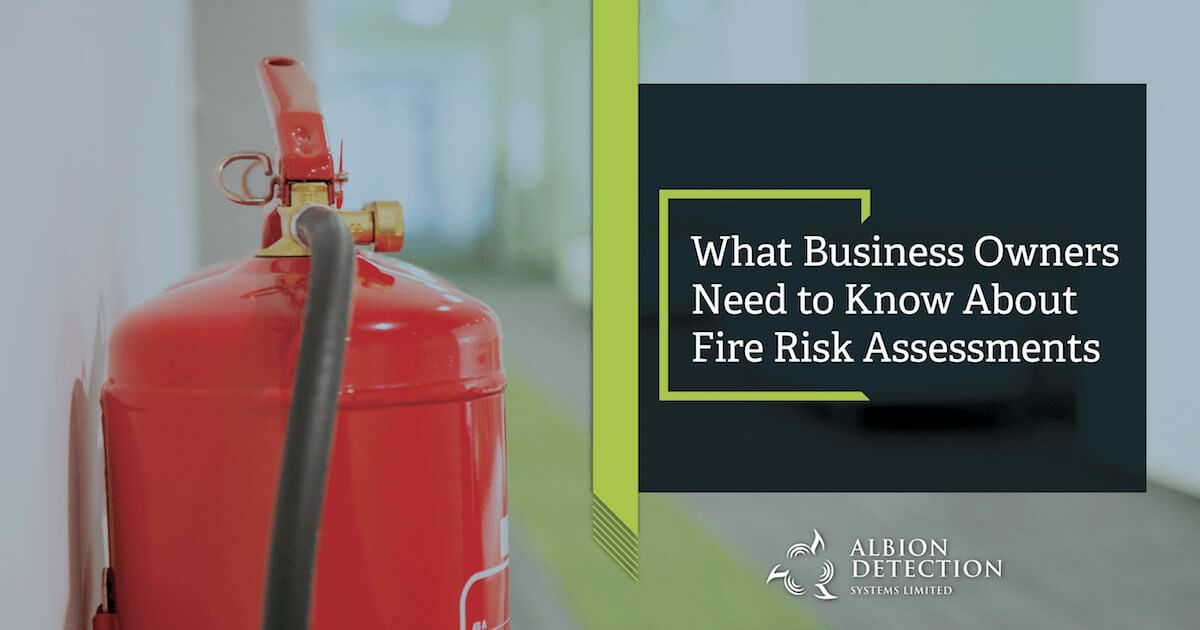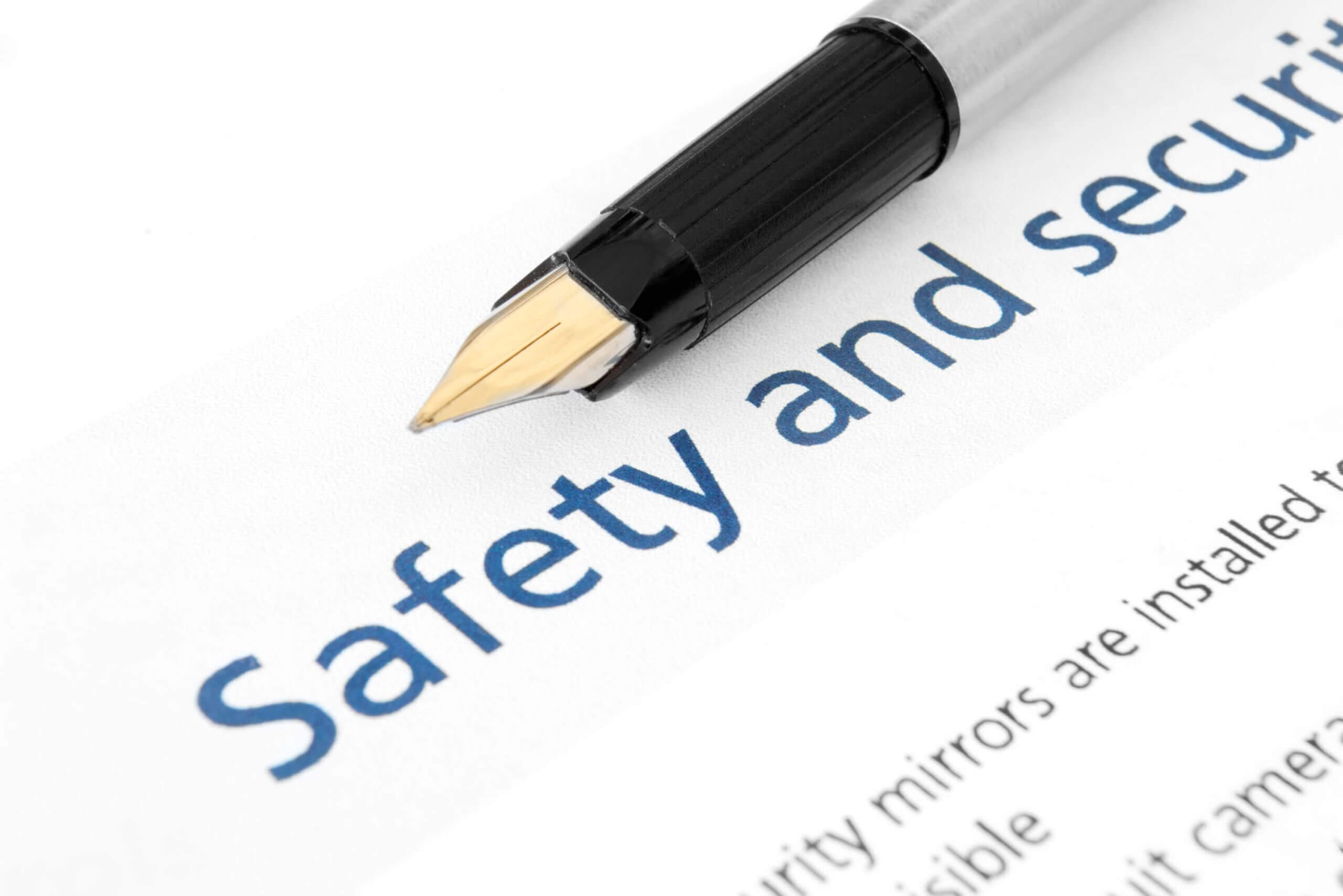
What Business Owners Need To Know About Fire Risk Assessments – Albion Detection Systems
Ensuring you understand the structures and processes of fire risk assessments is one of the most important parts of safeguarding against fire damage or inadvertently failing to adhere to your fire safety responsibilities.
The official Gov.uk website has formal advice on carrying out your own risk assessment, including fire risk assessment templates and guidance documents.
This brief guide should help you understand some of the key elements of
- What a fire risk assessment is
- Who it involves
- What it entails when put into practice
Why Do I Need A Risk Assessment?
Risk assessments are very important procedures and a vital piece of paper for every company with premises and staff to protect.
Nearby fire and rescue authorities can inspect your premises and issue the appropriate fire safety notices as and when they’re required.
However, the responsibility for carrying out a risk assessment ultimately falls to your company.
Failure to follow fire safety legislation can lead to imprisonment, emphasising how important it is to ensure all procedures such as fire alarm installation, maintenance and fire drills are completed by the book.
Knowing things such as how many fire drills are required by law, how frequently to check fire safety equipment and what is and isn’t acceptable per legislations will become clearer after completing a risk assessment.
What Is A Risk Assessment?
A risk assessment is a thorough examination of the fire risks on your premises, as well as the people and assets which could be at stake.
Your assessment must carefully consider the fire hazards which your individual location could pose, and then evaluate how best to remove or reduce these risks, before putting these plans into action.
All findings from the assessment should then be documented to prepare evacuation plans.
It is a critical part of your fire protection and the key to keeping your staff, business and assets safe.

Identifying Hazards Through Your Fire Risk Assessment
Fire hazards can be deceptively difficult to identify.
Identifying each hazard for your fire risk assessment will require a keen understanding of the two components in balance which work to create each individual hazard.
When carrying out the assessment, the assessor must understand both the possibility of fire and the extent of the possible consequences of such an event.
For instance, a factory handling combustible materials may have a higher than average risk of fire.
However, if members of staff adhere to fire safety regulation and the correct measures are in place, then the probability of an incident, and therefore the risk, remains normal to low, depending on the assessors’ analysis.
The basic principle is to ensure as many risks as possible remain at the lower end of the scale, thus adhering to best practice in fire safety terms.
How To Assign A Responsible Person
The most important person in a fire safety risk assessment is the designated ‘responsible person’, or RP.
As of 2005, this is generally defined as the employee or business owner tasked with carrying out the risk assessment.
There are a few key criteria to keep in mind when making your choice, to ensure you select the right person for the job and avoid the risk of prosecution or worse due to fire safety negligence or naivety.
What Should The Responsible Person Be Focussed On?
They should be:
- Well-informed about risks within the building, though they do not have to be responsible for or in control of any or all of the location they are risk-assessing
- Able to cooperate with the business owner or people otherwise in control, to ensure open lines of communication and coordination of decided fire safety provisions
- Confident in their ability to complete the fire risk assessment form and aware of the latest procedures and regulations required
How To Get Help With Your Fire Risk Assessment
If you’re unsure how to complete your risk assessment, there is help at hand.
Perhaps you can’t find a designated responsible person, or simply don’t have the time or the expertise to achieve the intended outcomes satisfactorily.
In this instance, you can appoint a ‘competent person’ such as a professional risk assessor to ensure the quality of your assessment.
This person does not take over from the RP but supports their role by lending their superior knowledge to your risk assessment.
Selecting a competent person requires finding someone with the right training and experience, though they do not have to be a fire safety expert.
As stated earlier, whilst local authorities can provide advice, they cannot take responsibility for the full assessment.
What a Successful Risk Assessment Includes
For your assessment to be a success, your assigned RP must determine:
- Fire hazards and the people who would be at risk
- Remove or reduce this risk to the lowest practicable level
- Assess which fire safety measures and policies will help to maintain this lower level
- Reduce the chances of a fire-related incident by knowing how and when to conduct a fire drill
- Prepare contingency plans including an evacuation procedure in the event of fire
- Create plans to mitigate the effects should a fire strike
For most companies, this will be far more straightforward to complete than you might imagine.
Most modern premises are designed and maintained with some idea of fire safety in mind, but this does not remove the necessity of a risk assessment.
Other factors could also play a part, such as the number of workers and the complexity or size of the premises.
Head to the Gov.uk website to download their official guide and five-step checklist to help you complete your assessment, enabling you to:
- Identify fire hazards, limiting the use of naked flames and keeping sources of ignition away from fuel and oxygen, alongside assessing all sources of heat and combustible materials for safety and security.
- Identify people who could be at risk of fire, including varying levels of risk dependent on job role or location within your premises. Some people may be considered at higher risk, such as those who are more vulnerable due to age or disability.
- Evaluate these factors by assessing first which risks are posed, and who they could affect, and then formulate a plan for alleviating and managing these risks on a day-to-day basis
What To Do After Your Fire Risk Assessment Has Been Completed
Your risk assessment requires regular reviews and updates to remain relevant.
Furthermore, the work of the assessment doesn’t end on completion, but should instead be used to help provide future training in how to handle fire risks and emergency situations.
Completed well and accompanied by a thorough fire safety checklist, your risk assessment will help keep your company in good shape.
Book Your Fire Risk Assessment Today
Download our brand new fire protection guide created for business owners for a complete at-a-glance reference to protecting your business premises, staff and assets. Or contact us to find out more, or book your free no obligation Fire Protection Consultation



